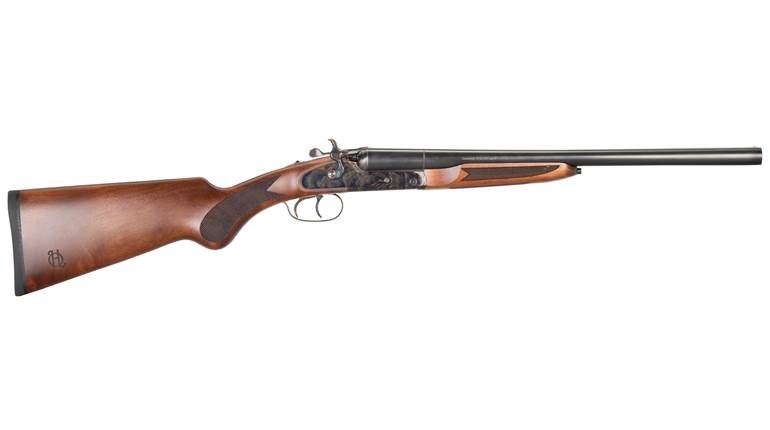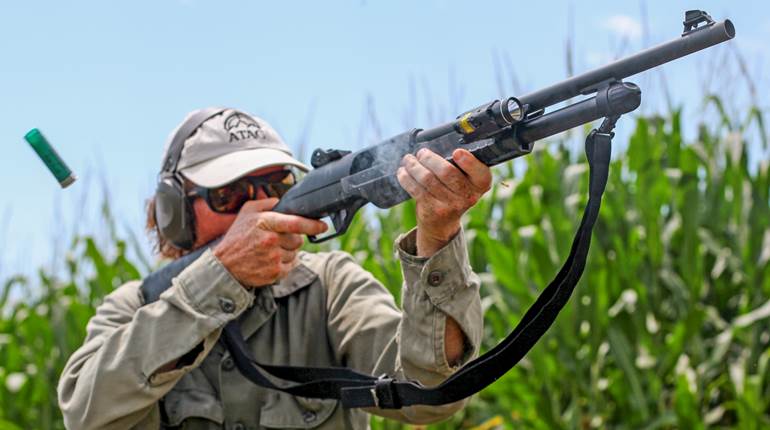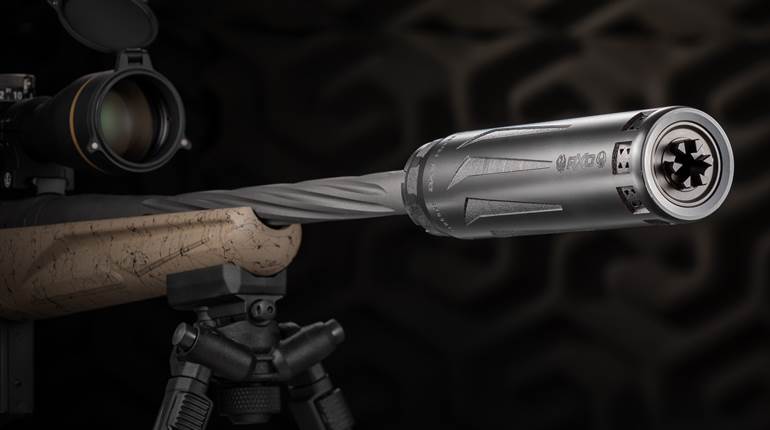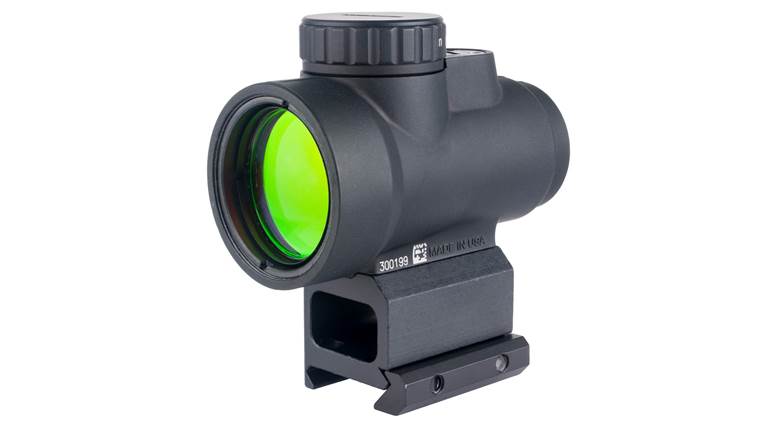
Given the perpetually argumentative nature of many in the gun community—the 9 mm Luger versus .45 ACP debate now continues on into its second century—it speaks volumes that virtually no one questions the 12 gauge’s status as a devastatingly effective fight-stopper. Just don’t make the mistake of opening the floor to whether birdshot is a valid defensive option … . But the limitation of the scattergun platform as it pertains to self-defense has always been that of capacity, given how long, heavy and rotund 12-ga. shotshells are relative to conventional rifle and pistol cartridges.
For a long time, gun manufacturers did little to rectify this issue beyond offering extended tubular magazines on their fighting models, but that practice can only ever make so much of a difference, and it shifts the gun’s center of gravity dramatically forward, rendering the firearm more nose-heavy and potentially difficult to wield competently. But, in recent years, the industry has started thinking outside the box a bit more in an effort to address this shortcoming, resulting in a modern crop of fighting shotguns featuring detachable box magazines and/or bullpup designs that make practical the utilization of multiple tubular magazines.
Other examples exist—including the IWI Tavor TS12, the SRM 1216 and the Standard Mfg. Co. DP-12—but the most popular example of the latter is definitely Kel-Tec’s KSG. This unorthodox bullpup certainly struck a chord with consumers, as it has been a strong seller for the Florida-based company ever since its launch a decade ago at SHOT Show 2012, with demand, at times, exceeding the factory’s ability to supply them. So, it really should come as no surprise that a major manufacturer would delve into this nichey-but-lucrative market with an offering of its own that employs similar principles to maximize the tactical shotgun’s onboard firepower, which is exactly what Smith & Wesson did in August of 2021 with the introduction of its M&P12.

Looking externally, to my eye at least, like the hypothetical offspring of a KSG, a DP-12 and Smith’s own M&P handgun, the new M&P12 is a dual-magazine, pump-action, bullpup shotgun. The “12” in its moniker takes on a double meaning as both the gauge in which it is chambered and its capacity when loading both magazines (six each) full of 3" magnum shells. Alternately, each of the pump gun’s 19.5"-long side-by-side tubular magazines can accommodate either seven 2¾" shells or 11 of the 1¾" short shells, bringing the total topped-off capacity to 15 or 23, respectively—prodigiously high figures given that we’re discussing a compact 12-ga. shotgun.
Far from the company’s first foray into the shotgunning domain, the M&P12, in fact, represents the third era of S&W scatterguns. Early in its history, the firm produced double-barrel break-actions until the 1870s and then partnered with Howa of Japan a century later to import the Model 1000 and the Model 1000P/3000 beginning in the 1970s—an arrangement that ended in the mid-’80s. The new design is, however, the first shotgun manufactured in-house at S&W in close to 150 years, the first marketed under its Military & Police (M&P) banner and the first bullpup.
Bullpups are highly polarizing. Most people either love them or hate them, with very few tepid perspectives existing in between. The concept of positioning a firearm’s action behind its trigger group, near the buttpad, comes with both inherent benefits and innate issues to be overcome—with proponents of the notion generally choosing to focus on the pros and the naysayers deciding to fixate on the cons.
I personally believe that the bullpup is, indeed, an idea with merit, and as we’ll see as we run down the features and characteristics of the M&P12, the tube-fed, pump-action defensive shotgun is especially well-suited to this configuration—as the platform benefits from the bullpup’s advantages while simultaneously mitigating its shortcomings. And while shotgun traditionalists may recoil in horror at the boxy, businesslike and futuristic look of the M&P12, it offers ample problem-solving firepower in a completely ambidextrous package that most shooters will find highly intuitive to use.

The most glaringly apparent benefit of the bullpup is having a firearm of very short overall length without sacrificing barrel length. The M&P12 measures just 27¾"—within about 1.5" of most of the truncated Shockwave-type firearms that have come out during the past five years. Yet, unlike these guns, it takes advantage of a full 19" barrel and the stability and recoil control offered by a buttstock.
This also makes it a good 10" to 12" shorter than most tactical shotguns with barrels of similar length—no minor improvement—and it’s even 5" to 6" more compact than the typical semi-automatic carbine. A bullpup’s shortened form factor provides tactical advantages for the home defender as well, both enhancing the maneuverability of the user and his or her ability to retain control of the gun, as having a foot less real estate out front makes navigating cramped interior corridors easier and offers less for an aggressor to grab hold of. The M&P12 can’t be called slender by any means, though; it measures 3.25" across at the broadest portion of the fore-end and is still 2" at its slimmest point, with much of the rest of the gun closer to that maximum figure than the minimum one.
At an empty weight of 8 lbs., 5 ozs.—and tipping the scales at 9 lbs., 10 ozs., when loaded to capacity with 15 2¾" buckshot shells—there are many defensive scattergun options on the market lighter in heft than the M&P12, if you’re only comparing specs. But bullpup weight figures can be quite deceptive, as a butt-heavy gun is far easier to shoulder for an extended period of time than is a nose-heavy one, as that weight is tucked in tight against the body rather than far out front hanging off the end of the barrel. In actuality, many shooters of limited upper-body strength will have a far less taxing time effectively wielding the M&P12 than they would a lighter, conventionally configured tactical shotgun.

Although the components may be situated in unaccustomed places, the operation of the M&P12 is really no different from that of any “normal” pump gun—with the exception of the presence of the second tubular magazine and a control that dictates which of the two tubes is currently feeding the action. Occupying the area that would comprise the buttstock and comb of a traditional shotgun is the M&P12’s open-bottomed, 410 stainless-steel receiver. A large opening underneath the receiver acts as both a loading port and an ejection port, as it is here that both fresh shells are inserted into its dual magazines and fired hulls are ejected forcefully at the shooter’s feet. This arrangement is equally convenient for right- and left-handed shooters alike—without downward ejection, a southpaw using a standard, right-ejecting bullpup can expect to chew some brass.
The bolt assembly rides atop the rear of a carrier that extends forward with a pair of integral action bars to connect to the manually operated slide-action fore-end. On the backstroke, initiated by either firing the gun or activating the action lock lever (incorporated into the front of the trigger guard and actuated by pressing downward with the trigger finger), an extractor at the 6-o’clock position of the bolt face pulls the hull from the chamber as the bolt is drawn rearward. When the carrier reaches the end of its travel, the elevator (the arms of which are raised above the extracting shell at this point in the cycle) is sharply lowered, flinging the hull downward through the port. Concurrently, the rearward travel of the bolt also causes the active magazine to release a shell onto the now-lowered elevator. Running the slide fully forward lifts the elevator and aligns the shell so that it can be pushed into the chamber as the bolt returns to battery. The rear edge of a loaded-chamber indicator in the top of the receiver levers upward when a shell is chambered, within the eye line of the shooter.

Unlike the KSG, the M&P12’s magazine tube selector is located at the rear of the shotgun’s slide housing, relatively high up on the firearm; the fore-end must be locked forward, with the gun in battery, for this control to be toggled from one tube to the other. One side of this push-button selector always projects outward from the slide’s housing, while the other lies flush—the protruding side indicates which of the two tubes is currently in use. I found its location to be very conducive to rapidly switching magazines.
As a lefty, configuring the gun so that it first draws from the right magazine made the most sense, as once that tube ran dry, it was a simple matter of reaching back with my support hand and knocking the button to the other side of the gun with my palm in order to quickly switch tubes and resume firing. Shooters afflicted with right-handedness would just reverse this order. And, of course, the dual magazines also permit a user to load up with two separate types of ammunition and switch between them as necessary, if desired. Unfortunately, there is no magazine cut-off on the M&P12, so you’re not going to be able to circumvent the magazines and load a shell directly into the chamber.

Smith is basically banking on all the ammunition contained within the shotgun being enough to resolve any defensive scenario without the need for a tactical reload, as loading shells into the M&P12 is something of a cumbersome operation. And, to be fair, this really isn’t an unsafe assumption, as 15 rounds of nine-pellet 00 buck is a more than sufficient payload for all but the most ludicrously hairy of situations—and I’m talking John-Wick hairy.
The difficulty with loading the gun is that each of the magazines has a corresponding “load/unload assist button” that must be depressed while a shell is being inserted into the tube—this is most easily accomplished by either first resting the nose of the shotgun on a flat surface like a countertop or a workbench, or with the assistance of a third hand. Off-hand loading or topping-off is possible, by cradling the butt of the shotgun upside-down against the chest and using a finger to press the button as needed, but it’s going to require a ton of practice for this to become ingrained enough to be smoothly performed during the bedlam of a defensive encounter. A QD flush cup on each side of the buttstock is provided for the implementation of a single-point sling, although no compatible sling swivels come with the gun.
One benefit of the load/unload assist buttons is that they allow the contents of the two magazines to be emptied without the need to first pass each shell through the chamber. While using one hand to catch and ease it from the rear of the tube, briefly press the button with your other hand to release a single shell. Repeat this until the magazine has been emptied. Simply holding the button down will cause all shells inside it to vacate the tube at once, creating a logjam inside the ejection port.

A metal shroud surrounds the chrome-moly-vanadium steel barrel for the entirety of its length, and incorporated into each side of this protective barrier are five, 45-degree-offset, M-Lok-compatible slots for the installation of accessories such as lights or laser modules. While the shotgun comes with no sights, an 11"-long section of Picatinny rail is affixed to the top of the barrel shroud by four screws. This allows for the installation of the back-up iron sights and/or optic of the user’s choice, and the rail is spaced above the comb such that AR-height sighting options will align well with the eye lines of most shooters.
Unlike the majority of tactical shotguns, which are typically not threaded to accommodate interchangeable choke tubes and therefore leave the shooter with no options but to use an unconstricted bore, the M&P12’s barrel features Rem Choke-pattern threading and comes with two choke options. From the box a 0.726" cylinder choke is installed, but a 0.712" modified choke is also included. These give the firearm more versatility than most of its competitors and open it up to select hunting applications in addition to home defense.

The M&P12’s polymer pistol grip (and to a lesser extent its included, removable vertical fore-grip) looks like it was lifted directly off of a double-stack M&P pistol’s frame, and it does, in fact, utilize the same four-insert interchangeable backstrap system and grip tool employed by the handgun line. Both elements bear the aggressive skateboard-tape-like texturing of Smith’s M2.0 handguns.
Providing a vertical foregrip from the factory was an insightful addition, as the presence of one is more or less essential to running the gun quickly well, given the considerable width of the fore-end—and the leverage it offers helps ensure complete travel of the slide, minimizing the possibility of a short-stroke. Anyone familiar with the AR platform will already be acquainted with the 90-degree throw of the M&P12’s bilateral safety selectors, found within reach of the shooting-hand thumb.
The trigger is often regarded as the Achilles heel of the bullpup configuration, owing to the long linkages needed to connect it to the action, and the guns have a reputation for being difficult to use accurately for this reason. This drawback, however, is largely immaterial in the case of a tactical shotgun that does not need to be terribly precise in order to be effective. And besides, I found the sample M&P12’s trigger to be above par for a bullpup. The average for 10 trigger pulls came to 6 lbs., 10 ozs. In terms of how the trigger feels, there’s 1/4" of take-up before you encounter resistance, with only a bit of creep through the break.
A recall was issued in October 2021, when S&W discovered that the heavy use of particularly hot loads shorter than 3" in length could cause deformation of the barrel and potentially crack the chamber of some M&P12s. By that point I had already spent a considerable amount of time on the range with the gun without any issues, including conducting this evaluation’s pattern testing, but we nonetheless shipped the firearm back to the company for a retrofit. The test sample, now with a re-designed barrel assembly and benefitting from a refined heat treatment, was returned to me within two weeks, and I went ahead and ran another 90 shells of varying lengths through the shotgun to confirm function.
Reliability, both pre- and post-recall, was 100 percent with all shell lengths, including good success with Federal’s 1¾" No. 4 buckshot load. Defensive ammunition was predominantly used, but a box or two of birdshot also fed, fired and extracted without a hiccup. I didn’t shoot much 3" ammo through the gun—basically just enough to confirm that it would handle such shells and that the fired hulls could, indeed, clear the ejection port on their way out. This is because, in my opinion, 2¾" buckshot is more than effective enough, and I would much rather have two extra rounds of the shorter, more-readily-available shells onboard than load the shotgun with fewer, much-more-difficult-to-control magnums.
 On the range, I found that the coarseness of the pistol grip/vertical foregrip grew progressively more unpleasant as the round count increased, but the average user is unlikely to fire this gun at high enough volumes for this to become problematic. Recoil is pretty much what you’d expect of a manually operated 12-ga. shotgun; the 1/2"-thick hard rubber buttpad didn’t do much to tame the M&P12’s kick. It’ll be stout enough with self-defense buckshot to knock most shooters off target with each shot, but it wasn’t punishing.
On the range, I found that the coarseness of the pistol grip/vertical foregrip grew progressively more unpleasant as the round count increased, but the average user is unlikely to fire this gun at high enough volumes for this to become problematic. Recoil is pretty much what you’d expect of a manually operated 12-ga. shotgun; the 1/2"-thick hard rubber buttpad didn’t do much to tame the M&P12’s kick. It’ll be stout enough with self-defense buckshot to knock most shooters off target with each shot, but it wasn’t punishing.
Even with the more open cylinder choke installed, pattern testing at 25 yards placed all nine pellets from Browning’s Shotshell Deer load within the target’s 21" center circle. Ten test patterns averaged 19.1" in diameter—a very useful rate of shot dispersion for home-defense use.
A few shooters will undoubtedly dismiss S&W’s new shotgun out of hand because of its unconventional configuration and presentation. This is their prerogative—and the market already offers no shortage of lower-capacity scatterguns for these folks to use that won’t strain their traditionalist sensibilities. But that is unfortunate because, in general, applying the bullpup concept to the tactical pump-action shotgun makes all kinds of sense—and the M&P12, in particular, is an example of how to do it well. Aside from some loading/unloading idiosyncrasies, it offers a veritable bandolier’s worth of crisis-ending firepower in a platform that, regardless of the hand/eye dominance of the shooter, is reliable, versatile, simple to use, handy to maneuver and easy to accessorize.





































